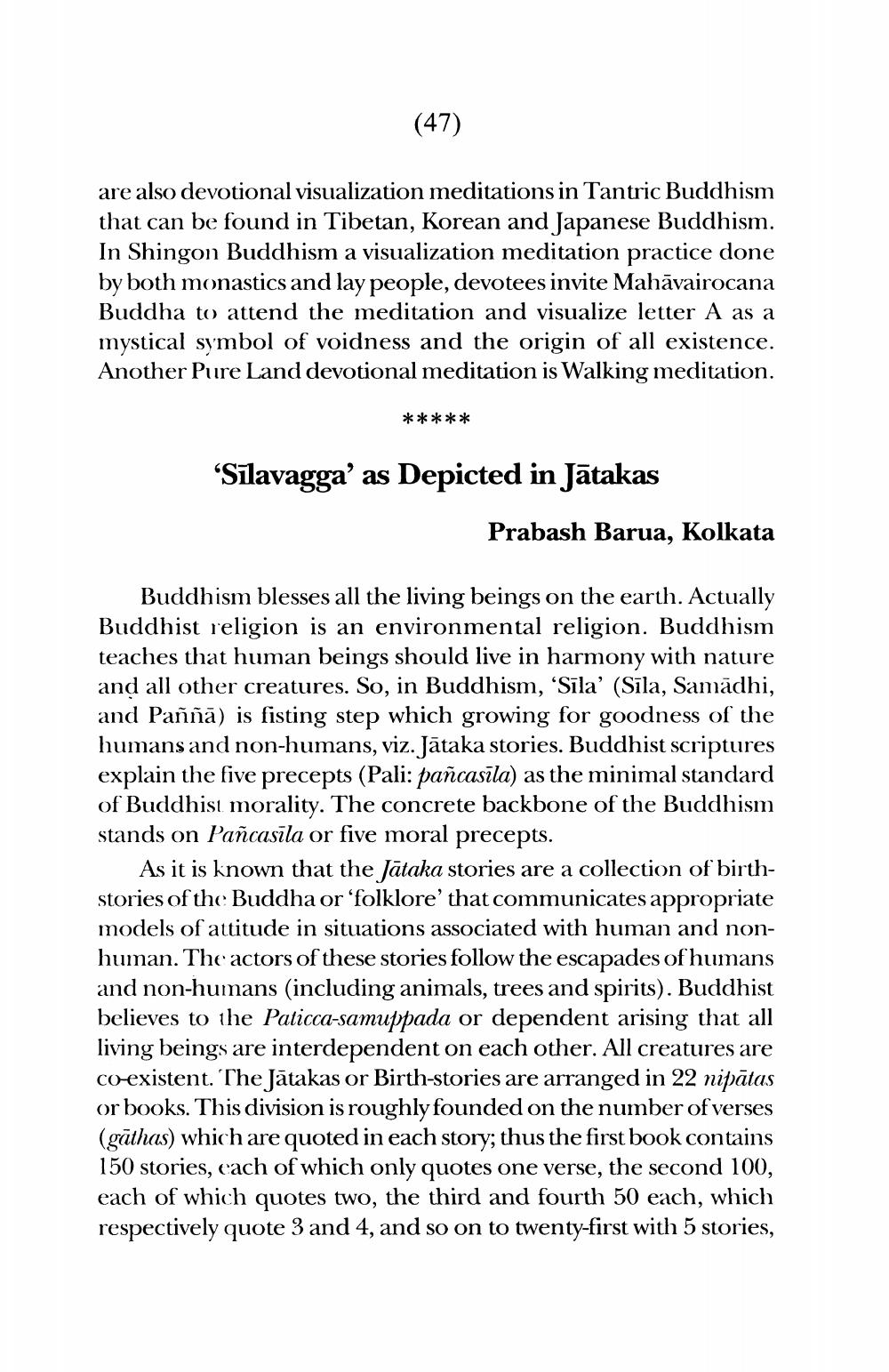________________
(47)
are also devotional visualization meditations in Tantric Buddhism that can be found in Tibetan, Korean and Japanese Buddhism. In Shingon Buddhism a visualization meditation practice done by both monastics and lay people, devotees invite Mahāvairocana Buddha to attend the meditation and visualize letter A as a mystical symbol of voidness and the origin of all existence. Another Pure Land devotional meditation is Walking meditation.
*****
'Silavagga' as Depicted in Jātakas
Prabash Barua, Kolkata
Buddhism blesses all the living beings on the earth. Actually Buddhist religion is an environmental religion. Buddhism teaches that human beings should live in harmony with nature and all other creatures. So, in Buddhism, 'Sila' (Sīla, Samadhi, and Paññā) is fisting step which growing for goodness of the humans and non-humans, viz. Jātaka stories. Buddhist scriptures explain the five precepts (Pali: pañcasila) as the minimal standard of Buddhist morality. The concrete backbone of the Buddhism stands on Pancasila or five moral precepts.
As it is known that the Jātaka stories are a collection of birthstories of the Buddha or 'folklore' that communicates appropriate models of attitude in situations associated with human and nonhuman. The actors of these stories follow the escapades of humans and non-humans (including animals, trees and spirits). Buddhist believes to the Paticca-samuppada or dependent arising that all living beings are interdependent on each other. All creatures are co-existent. The Jātakas or Birth-stories are arranged in 22 nipātas or books. This division is roughly founded on the number of verses (gathas) which are quoted in each story; thus the first book contains 150 stories, each of which only quotes one verse, the second 100, each of which quotes two, the third and fourth 50 each, which respectively quote 3 and 4, and so on to twenty-first with 5 stories,




